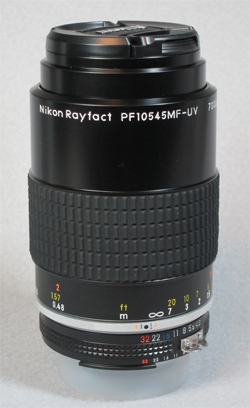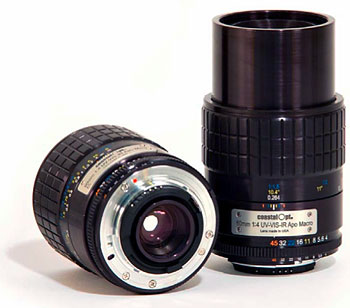Nikon Camera and UV
A common misconception is that if you want to take UV pictures, a Nikon camera is much better than a Canon, Sony, etc. This is not correct.
I think the problem relates to a special UV capable Nikon made originally in 1994 called the Nikon 105mm f/4.5 UV-Micro Nikkor. The lens used special lens elements made of Quartz versus the typical BK7 glass used in common lenses. Quartz transmits UV, Visible and IR light past the capabilities of the silicon sensor. Nikon discontinued production of the lens in 1999, and resumed limited production in 2005. Company Seven located in Maryland, USA is distributing the lens. If you are interested, you can learn more about the lens and contact them by clicking here.

It wasn't the fact that they were using a Nikon camera to take a UV picture, but that Nikon was making a special UV capable lens and no other major competitor did. It was the lens - not the camera that allowed customers to take a UV picture.
A very similar lens is also made by Jenoptik which you can see by clicking here.
Perhaps a more useful lens would be the Jenoptik 60mm APO lens which you can see by clicking here

Taking a UV picture with a stock camera is not going to work very well because:
- The camera has a UV and IR Cut Filter (ICF) that blocks most of the UV and IR
- The camera sensor microlenses and Color Filter Array (CFA) block a lot of UV light
- A normal camera lens typically passes UV to about 365nm
- You should have special UV pass filters to block visible and IR light such as our XNite330C and XNite330C + XNiteBP1
By converting the camera to UV-VIS-IR (we do this for many different cameras and have been doing so for over 20 years) and using special filters on a stock lens, you can take UV pictures. Using a special UV lens will help, but be warned because most of these lens cost $6,000 and up. On selected camera models, we can remove the camera sensor microlenses and CFA which turns the camera into a monochrome device and increases sensitivity in the UV about a factor of seven. The best setup for taking UV pictures is with a camera converted to monochrome UV-VIS-IR or UV-Only, special UV capable lens and special UV pass/IR blocking filters. If you can control the light source so that you are using UV light to illuminate, it will help more. We also offer UV camera flashes and UV illuminators.
Canon, Sony, Nikon, etc, all use silicon based sensors. Silicon has the same basic response to light. The sensors microlenses and CFA are similar. If you are comparing cameras of similar model year, similar price with a similar pixel pitch (size of the pixel) and sensor size, they perform quite similarly. There are some differences, but they tend to be competitive with each other.
{youtube}o9BqrSAHbTc{/youtube}